Daniel Kaluuya’s eyes carry so much charisma, Jordan Peele’s horror sci-fi Nope managed to accomplish a 21st century impossibility—a heroic every man.
Not only that, Nope does so without using low-effort screenwriting tricks.
These tricks, Peele’s contemporaries would have leaned into like a crutch. But instead, Peele puts the entire weight of this movie on its lead actor.
***MAJOR SPOILERS AHEAD FOR NOPE AND GET OUT***
Table of contents
Key Points
- The eyes play a pivotal role in acting by helping the audience connect with a character’s emotions, intentions, and personality traits.
- In film and television, the use of close-ups emphasizes the importance of eyes in conveying emotions, allowing audiences to experience the story at a deeper level.
- Eye acting can greatly enhance character development; for example, a character’s personality can be inferred based on the intensity or gentleness of their gaze.
- Eyelines are crucial in storytelling as they provide insight into a character’s focus or intentions, informing the plot direction.
- The film Get Out illustrates the power of eye acting through Daniel Kaluuya’s performance, where his eyes were effectively used to convey a range of emotions.
- Other actors noted for their remarkable eye acting skills include Jake Gyllenhaal, Al Pacino, and Tom Hardy. Their performances, often with minimal dialogue, showcase the profound impact of expressive eyes in creating believable characters.
- In the horror genre, eyes are used extensively to evoke fear and suspense. Techniques include close-ups, special effects, lighting, and suggesting that a character is concealing something.
- Actors’ eyes in horror films often express a wide range of emotions, contributing significantly to the atmospheric tension and horror of the scenes.
- Daniel Kaluuya’s performance in the film Nope received acclaim for his powerful eye acting, proving its potency as a storytelling tool.
- Eye acting is crucial as it allows actors to convey subtle emotions and motivations, even in the absence of dialogue, significantly enhancing the depth and believability of their performances.
Film Conventions: First 15 Minutes
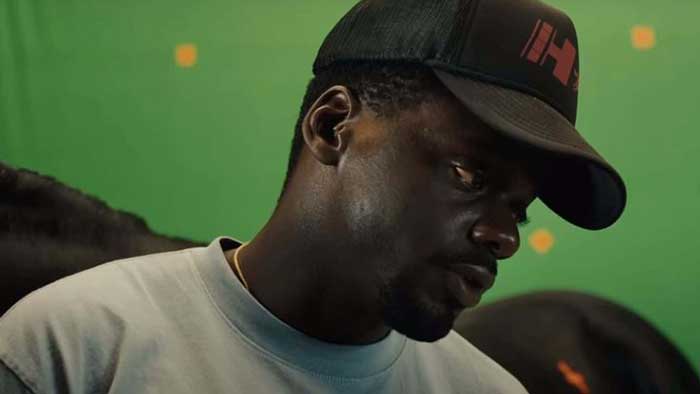
The first 15 minutes of a movie is precious real estate for a number of reasons.
Set the Tone
The opening of a film can set the tone and establish the mood for the rest of the movie. It can also introduce the main characters and give the audience a sense of the world in which the story takes place.
All of that is essential to get audience investment. People do walk out of movie theaters, and they definitely click away on their streaming device.
This can be especially important for establishing the stakes and context of the film.
Grab Attention
The opening of a film can often be a crucial time for grabbing the audience’s attention and keeping them invested in the story.
If a movie doesn’t start off with an engaging or intriguing opening, it may be harder to keep the audience interested throughout the rest of the film.
Again, there’s also no guarantee your audience won’t simply turn you off or walk out if uninterested.
Exposition
The opening of a film can often provide important information–or exposition–that is necessary for understanding the rest of the story.
Exposition is basically details about characters, like who’s related, who does what for a living, etc. It’s a backstory that helps to understand the setting you find yourself watching.
Nope’s First 15 Minutes

So, let’s take a look at the first 15 minutes (15 pages) of the Nope screenplay and compare it against some conventional film structures, paying special attention to the protagonist or main character.
In the first fifteen minutes for Nope, we definitely get a lot of introductions. Except none of them go a long way to favorably portray OJ.
Never is Kaluuya’s character made to do anything unlikable, but there’s not a lot of wooing going over from a purely script level.
It seems to me like Peele either knew he’d cast Kaluuya or an actor equally talented, or else he believed he could squeeze the performance out of whoever he chose.
Either way, it’s a bold move.
The first two pages are Gordy. Pages 3-6 is OJ and Otis Sr. having an exchange and then Otis is struck from above by debris. The next pages, numbers 7-13 are the rehearsal catastrophe, and then we close out the first 15 pages of the script at the beginning of OJ and Emerald’s trip to Jupiter’s claim.
The first sequence is heavy on themes, and it’s heavy on the beginning of arcs (e.g. keeping your head out of the clouds) for the main characters.
But the script doesn’t do a lot to make us root for OJ specifically–the main character–in those first 15 minutes.
It’s all in the acting.
Beginning-of-Story Conventions vs Nope’s First Approach

There are a lot of tips and tricks, some full blown methodologies, about how to portray the first fifteen minutes of a movie.
And, more specifically, there exist guidelines for main characters in the first fifteen minutes of a movie.
Of course, these cookie cutter techniques sometimes produce formulaic results, so they’re best not followed to a tee.
Eight Sequence Structure
Take a movie and break it into eight parts. The idea comes from the old days of filmmaking when they had to change reels and they needed a cliffhanger to fall at the change over to keep audiences interested.
In a typical two-hour movie, the first sequence ends at 15 minutes.
This is one widespread way of how movies were written, and that continued even past the technological need.
The sequences go like this:
- Introductions
- Dilemma
- First Obstacle
- Midpoint
- Twists & Turns
- Culmination / Low Point
- Climax
- Resolution
In “Introductions,” we meet everyone and everything important. This is the chance for a main character to shine. First impressions mean a lot, and they’ll hold pretty strong from the first sequence onward.
Blake Snyder’s Save the Cat
Blake Snyder is a screenwriting guru–yes, that’s a profession, apparently.
He came up with a list of guidelines, complete with a “Beat Sheet” of story points with time markers for hitting those moments.
This approach is also responsible for a lot of the formulaic movies we’ve seen in the 2000s-present.
Well, in Snyder’s book “Save the Cat! The Last Book On Screenwriting That You’ll Ever Need” he gives a little adage about saving a cat, hence the title.
Essentially, the hero must do something when an audience first meets them so that we like them and want them to win.
But what does OJ do from the get-go of the movie to get us to like him?
He seems to care for the horses and tends to them in a casual work day way. That shows he has at least some empathy for animals. Okay. He watches his dad die in front of him. That’s pretty bad, so maybe we feel sorry for him? As we should.
But is that “doing” something the way we want willful, plot-driving characters to act?
Yet, I watched this movie not fully knowing if this guy has what it takes. I watched it to the end, following this average guy who never seems to do anything spectacular, and yet the end scene of him riding high on a horse does not seem out of place. In fact, it feels earned. Why?
David Farland
David Farland at MyStoryDoctor.com has been teaching storytelling for a while. Especially of the prose variety, but he has some advice just as applicable to filmmaking.
In “Creating Likable Protagonists,” he suggests writers do some combination of the following:
- Put your character in pain
- Have your protagonist “Pet the dog”
- Make your character apologetic
- Give your character friends
- Make your character powerful
- Make your character attractive
- Humor
- Compassion
- Honesty
- Courage
- Loyalty
- Etc. (he kind of says “whatever you think is attractive”)
Here again we have petting or saving an animal of some sort. I mean, I guess OJ “pets” the horses? But I feel like the spirit of “Pet the dog” is going out of the way to be kind to an animal. Not being kind in the way a cowboy is kind to their horse.
He’s not in pain except maybe emotional pain over losing his father. Although, we see him handling it pretty stoically, not in a way that evokes compassion.
He isn’t apologetic–not that he needs to be in the story.
He has a sister. Does that count as friends?
He’s not powerful.
Is he attractive? Physically, sure–although that isn’t portrayed in the script. That would be 100% owing to Kaluuya.
As for internal attractive qualities, he seems honest and he seems to have loyalty, but we don’t get any overt gestures of these qualities. Nothing to really convince us.
So why do I like this guy so much? Why does him being a badass hero at the end feel so earned?
Nope’s Ending

The ending of Jordan Peele’s Nope is an action-packed ride with most of the attention centered on Daniel Kaluuya riding horseback in an attempt to train/tame/wrangle the UFO-shaped beast nicknamed Jean Jacket.
This is all in hopes that OJ can corral the creature in line for the perfect shot to blow the lid off its strange undiscovered species.
This is OJ’s chance to shine, and he delivers.
Normally, I would find this ending cheap. Unearned. Yet, here, it makes sense. We’ve been with OJ the entire movie and while he’s not shown quite this level of heroism, we’ve been on his side 100 percent.
Why?
Well, ultimately, everyone will have to answer this for themselves. Maybe there’s even a few people who would disagree. But for me… it’s the eyes.
Nope’s Final Images
In one of the last lines of the script on page 99, describing closing images we see after the heightened climax, we get our final shot of OJ.
“There, at the end of the main strip is OJ mounted atop Lucky. Just standing there. Waiting there for her. Legend.”
So, not only does the screenwriter here, Jordan Peele himself, broadcast that this is a “Legend” level shot… but it’s like something straight out of a western.
Much of Nope could be classified as a modern take on a western, genre-blending itself into horror, suspense, comedy, and probably a few others I’m missing.
Regardless, this kind of final image is reserved for kings and heroes–people with charisma.
Importance of Charisma in Acting for Film
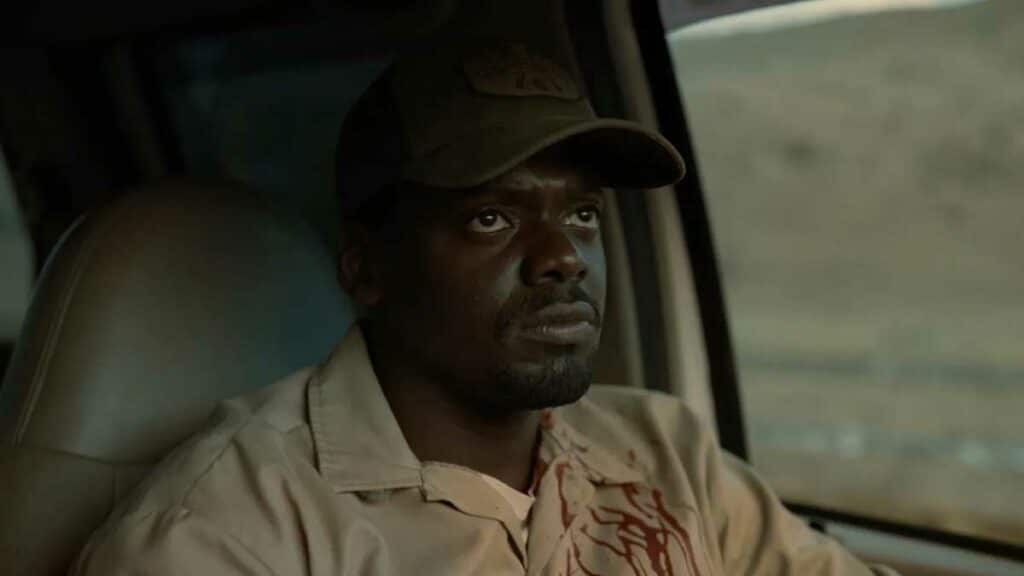
Charisma is an important quality for actors in film because it helps to create a connection between the audience and the character.
The Meaning of Charisma
Today, we know charisma as the ability to attract and hold the attention of others, and it is often associated with charm, confidence, and a sense of presence.
The word, though, has more powerful roots.
EtymOnline.com
From EtymOnline.com:
1875, “special spiritual gift or power divinely conferred, talent from God” (as on the early Christians in “Acts,” etc.), Latinized form of Greek kharisma “favor, divine gift,” from kharizesthai “to show favor to,” from kharis “grace, beauty, kindness” (Charis was the name of one of the three attendants of Aphrodite), which is related to khairein “to rejoice at” (from PIE root *gher- (2) “to like, want”).
In the form charism (plural charismata) it is attested in the “special spiritual gift from god” sense from 1640s. Middle English, meanwhile, had karisme “spiritual gift, divine grace” (c. 1500).
These gifts were of two classes, the gift of healing and gift of teaching, the latter again being of two kinds, the gift of prophecy and the gift of tongues. Such gifts have been claimed in later ages by certain teachers and sects in the church, as the Montanists and the Irvingites, and in recent times by some of those who practice the so-called faith-cure. [Century Dictionary, 1897]
The meaning “gift of leadership, power of authority” is from c. 1930, from German, used in this sense by Max Weber (1864-1920) in “Wirtschaft u. Gesellschaft” (1922). The more mundane sense of “personal charm” recorded by 1959.
Merriam-Webster
From merriam-webster.com:
The Greek word charisma means “favor” or “gift.” It comes from the verb charizesthai (“to favor”), which in turn comes from the noun charis, meaning “grace.” In English, charisma was originally used in Christian contexts to refer to a gift or power bestowed upon an individual by the Holy Spirit for the good of the Church—a sense that is now very rare. These days, we use the word to refer to social, rather than divine, grace. For instance, a leader with charisma may easily gain popular support, and a job applicant with charisma may shine in an interview.
History Extra (BBC History Magazine)
From HistoryExtra.com:
In his letters to the Corinthians, Paul wrote that each member of the church had a particular ‘charisma’, whether that might be speaking in tongues, prophesying or performing miracles.
This idea that different charismata, or gifts, were manifested in different members of the church was central to Paul’s theology, preserving both diversity and unity. His message was that there were many gifts but one spirit, many members but one body.
Charisma in Film
In film, actors who possess charisma are able to capture the audience’s imagination and create a sense of realism in their performances.
Charisma is particularly important in acting for film because the medium is so visual.
In a movie, the audience can see the actor’s every expression and movement, so the actor must be able to convey their character’s emotions and intentions through their physicality.
A charismatic actor can create a sense of energy and life on screen, making the audience want to watch and see more. It is also a key factor in making a character likable or relatable, which is crucial for the audience to engage with the story and the character.
Acting with the eyes
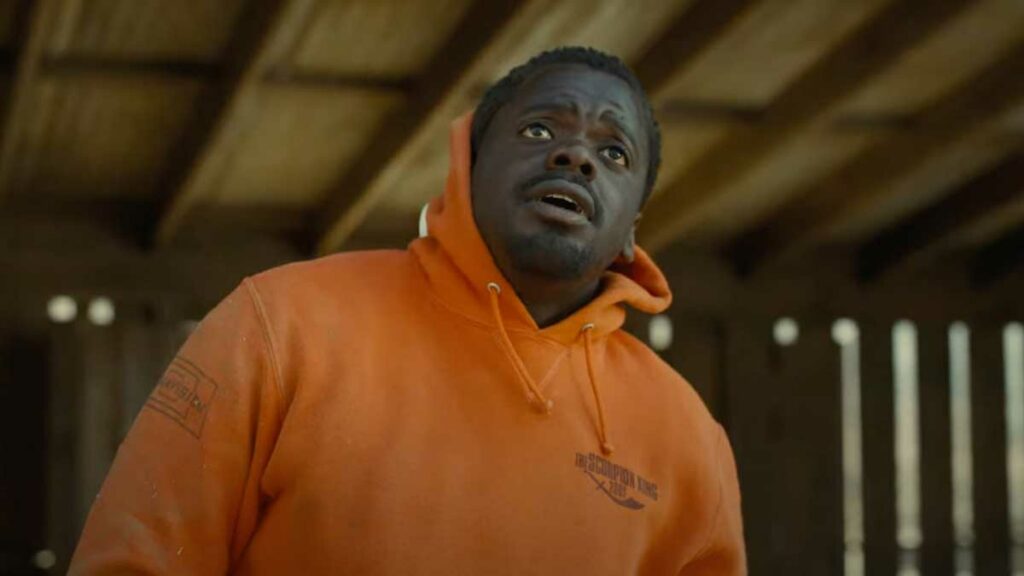
You may find the term “eye acting” stupid.
Granted. It is stupid.
But I dare you to Google it.
You’ll find tons of resources, mainly aimed at aspiring actors. And for good reason.
The Importance of the Eyes in Acting
The eyes are a crucial element in acting because they help the audience connect with the character on an emotional level and understand their motivations and desires.
We know this kind of intuitively. There’s the whole “the eyes are the window to the soul” saying. It may or may not ring true, depending on your beliefs, but there is a certain logic to it. We perceive the world through our eyes, so it makes sense why it’s a primary way other people perceive us as individuals.
But let’s dive deeper into some reasons the eyes are so important when it comes to acting.
Close-Ups
Close-ups and extreme close-ups.
In visual storytelling vernacular, this particular shot is meant to convey the most amount of emotion from an actor.
Someone crying? Close up. Someone staring down the barrel of a gun? Close up. We want to get as close to the eyes as possible.
To be fair, close-ups can be of anything, including inanimate objects. But the close-ups that pull the most emotion? Those featuring the face and eyes.
Emotive Capability
The eyes can convey a wide range of emotions, including joy, sadness, anger, fear, and confusion.
A skilled actor is able to use their eyes to convey emotion and help the audience understand what their character is feeling.
Character Development
In addition to conveying emotion, the eyes can also be used to help establish a character’s personality.
For example, a character with piercing, intense eyes may be perceived as confident and strong-willed, while a character with soft, gentle eyes may be seen as kind and nurturing.
The Human Face
In any given scene with humanoid characters, which is pretty much every scene in any story ever, the human face is what we humans care about the most. Sure, the rest of the body matters. But the face pulls the lead.
Of the face, the things most capable of exhibiting emotion? The eyes, eyebrows (arguably just a subsection of the eyes), and the mouth.
The Eyeline
But there are more reasons than this. The eyes tell us so much about intention and a scene.
Where is a character looking? As a simple example, in a two or three-person shot of a gun pointing showdown, the eyelines tell us who is looking where. Meaning, who wants to kill who? Maybe the eyes dart back and forth, because they’re cornered.
The point is, eyelines help tell us plot.
Get Out
Get Out is a horror film released in 2017. It was written and directed by Jordan Peele.
The movie follows Chris, a young black man (played by Kaluuya) who is visiting the family of his white girlfriend, Rose, for the first time.
While there, Chris becomes increasingly uncomfortable with the behavior of Rose’s family and their black staff members, who seem to be exhibiting strange behaviors.
As the weekend progresses, Chris uncovers a disturbing secret about the family and their involvement in a conspiracy to transplant the brains of white people into the bodies of black people.
The movie is a commentary on racism and white supremacy, and it received widespread acclaim for its clever blend of horror and social commentary.
Kaluuya’s Eyes in Get Out
The most iconic scene in Get Out–the one they made sure to show in trailers, and during awards telecasts–features Kaluuya’s body being immobilized.
This shot has so much emotion. Visceral emotion. Yet, it’s a shot of a man being completely paralyzed–decidedly still, especially for such an ultimately impactful motion picture shot.
Why?
Because Kaluuya kills his close-up. And it’s all in the eyes.
Lenika Cruz for The Atlantic wrote:
One of the most popular promotional images of the new horror-comedy film Get Out is that of a young black man staring straight at the camera. Little details stand out about him if you look long enough—he’s wearing a gray hoodie and T-shirt, there’s a slight crease on his forehead—but these are otherwise hard to really notice because of his eyes, which are wide and wet and red and give the unmistakable impression of a person frozen in pure, cold fear […] As the protagonist of Get Out, Chris Washington tells a great deal of the story using only his eyes. This is of course a testament to the excellent work of the actor, Daniel Kaluuya, who plays him.
Other famous eye actors
There are some actors famous for their eyes in one way or another.
Don’t just take my word for it, these examples are actually in-part inspired by a Reddit post asking for examples of “eye acting.”
Jake Gyllenhall
Jake Gyllenhall, like Kaluuya, has naturally expressive eyes.
For one, speaking from my observation, they seem very open. More so than most people. This lends itself to some intense emotion being conveyed in the face.
But eye acting extends further than that, even.
For instance, in Nightcrawler, Gyllenhall seemingly did his damndest not to blink in a single take. It created the effect of a night owl maniac who probably has a screw loose–job well done.
Al Pacino
The burning stare of Michael Corleone in The Godfather. The wide-eyed craziness of Tony Montana high on a mountain of coke. One thing is for sure. Al Pacino can act with his eyes.
Of course, he also did Scent of a Woman without utilizing his greatest tool, so he’s basically a God, but we digress.
Regardless. His eyes are huge, both literally and metaphorically. And known for their expressiveness.
Tom Hardy
Tom Hardy has a unique ability to use his eyes to convey a deep inner turmoil, vulnerability, intensity, and even danger.
This can be seen in his performances in films such as “Inception,” “The Dark Knight Rises,” “Mad Max: Fury Road,” and “Venom.” In these films, his gaze can communicate the character’s emotions without the need for dialogue. His eyes often become the key to unlocking the character’s innermost thoughts, making his performances particularly powerful.
Plus, he’s masked practically all the time but still shows everything with his eyes.
His ability to act with his eyes is also seen in his ability to convey a range of emotions with small changes in his expressions, which can make the audience feel like they are experiencing the same emotions as the character.
Horror & The Eyes
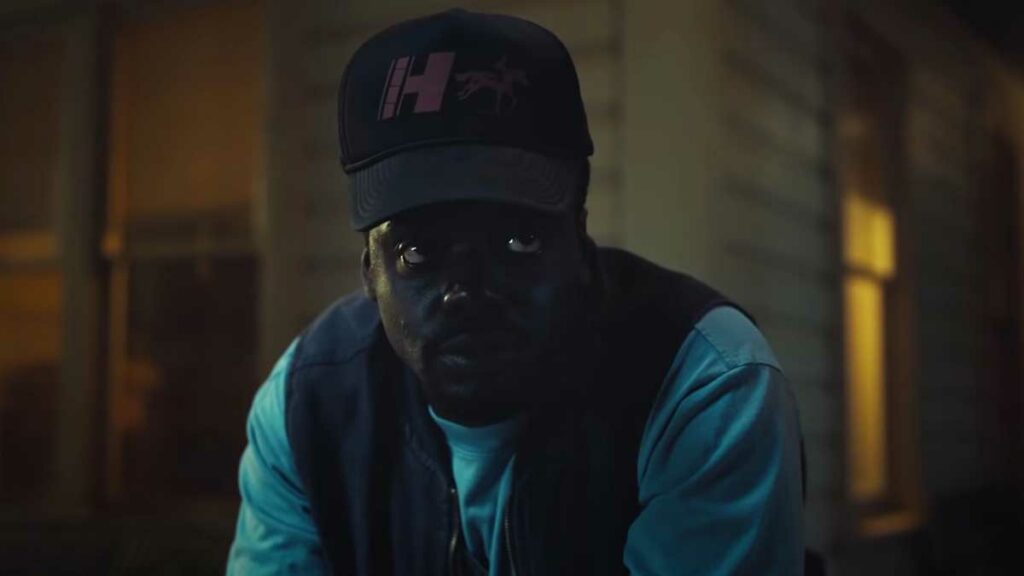
The film genre of horror has long relied on the eyes of its characters to sell the fear and intensity of its pivotal scenes. This technique can be seen in a wide range of horror films, from the earliest silent films to the latest releases.
Horror Close-ups
One of the most common ways in which the eyes of characters are used to create fear and intensity in horror films is through close-ups.
Close-ups of a character’s eyes can be used to reveal fear, anxiety, or madness, drawing the viewer into the character’s innermost thoughts and emotions.
This can be particularly effective when the character is facing a terrifying situation or creature, as the viewer is able to share in the character’s fear and experience it as if they were there themselves.
Special Effects
Another way in which the eyes of characters are used in horror films is through the use of special effects.
The use of CGI or practical effects can allow for the creation of terrifying monsters or supernatural beings with eyes that seem to glow or change color, adding to the sense of fear and unease.
In some cases, the eyes of the creature can be used as a focal point, drawing the viewer’s attention and adding to the sense of danger and tension.
Lighting
The use of low light or shadows can make the eyes of a character or creature seem larger or more sinister, adding to the sense of fear and unease.
Hiding Something
The eyes of characters are also used to suggest that something is not quite right or that the character is hiding something.
This can be used to create a sense of mystery and anticipation in the viewer, adding to the sense of fear and tension.
Actors, Eyes & Horror
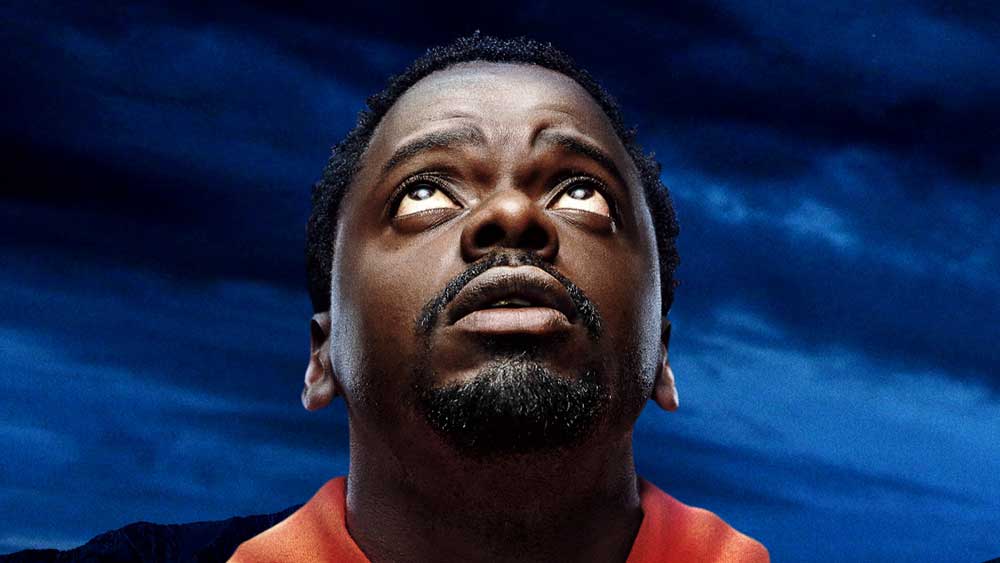
In addition to the technical elements used to create fear and intensity through the eyes in horror films, actors also play a crucial role in bringing this technique to life.
Actors are often asked to convey a wide range of emotions through their eyes, from fear and anxiety to madness and shock.
The use of non-verbal cues, such as facial expressions and eye movements, can be particularly effective in horror films as it allows the actors to convey their emotions without the use of dialogue.
Actors can convey fear and anxiety through wide-eyed stares, while madness can be suggested through frenzied, darting eyes.
Actors also have to work with the director to create a specific look or expression in their eyes to match the needs of the scene. For example, the look of a character’s eyes in a possession scene, or the expression on the eyes of the characters when they come face to face with a monster, is crucial for the audience to understand the emotions and the atmosphere of the scene.
In some horror films, the eyes of the actor are even used as a metaphor for the character’s inner turmoil or moral corruption.
This can be seen in films where the eyes of the characters change color or shape, to suggest that they have been taken over by an evil force or become corrupted in some way. This visual representation can make the horror more poignant and deeper for the audience,
Praise for Kaluuya’s Eye Acting in Nope
And of course, I’m not alone in seeing that Kaluuya’s eyes are the star of the show.
David Ehrlich, writing for Indie Wire, said, “Kaluuya’s eyes remain some of Hollywood’s most special effects.”
Lovia Gyarkye of The Hollywood Reporter said, “Kaluuya does wonders with a character who primarily communicates through stares. His penetrating eyes are impressive in their emotional range, and his looks begin to feel like a secret language.”
Noah Gittell, writing for Decider, sums it up well, saying, “Those eyes have become Kaluuya’s trademark. For me, the lasting image of Nope is not Kaluuya running from an alien invader or galloping on horseback through the California desert. It’s OJ in his car, after having learned that avoiding eye contact with the sentient flying saucer makes it lose interest. Kaluuya looks forward, not up, showing his gaze to us and not to it. “Nope,” he says matter-of-factly, earning a chuckle in his refusal to open himself up to another terrifying reality. How apropos for a film that dissects our ways of seeing to hinge on an actor who shows us everything by showing us nothing.”
Conclusion
In movies, eye acting is important because the eyes are a key part of nonverbal communication and can convey a range of emotions and intentions.
Through eye acting, actors can convey thoughts, feelings, and motivations to the audience without the need for dialogue. This can be especially important in conveying subtle emotions or in scenes where dialogue is minimal or absent.
What example of eye acting do you recall most vividly? Let us know in the comments below!